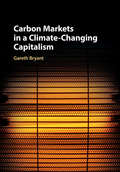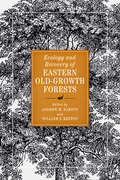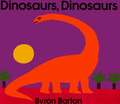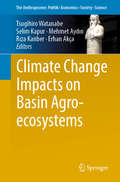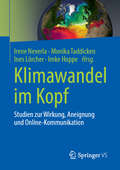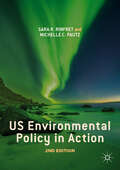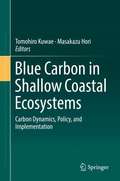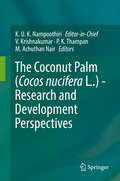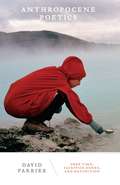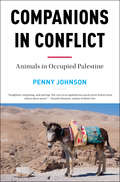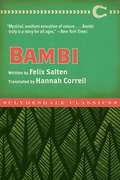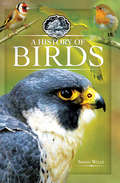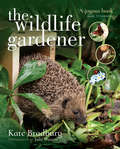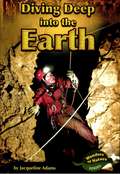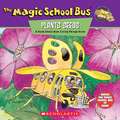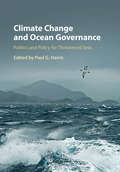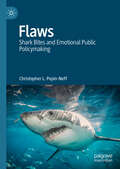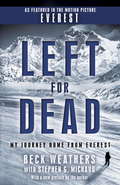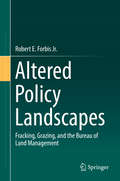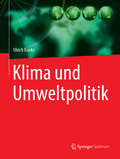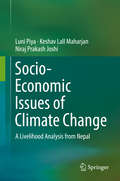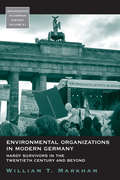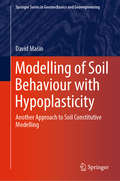- Table View
- List View
The Daredevil Snared (The Adventurers Quartet #3)
by Stephanie LaurensResponsibility knocks, and a reckless, hedonistic man responds and opens the door to love—thus is a daredevil snared.#1 New York Times bestselling author Stephanie Laurens brings you the third installment in THE ADVENTURERS QUARTET, continuing the drama of Regency-era high seas adventure, laced with a mystery shrouded in the heat of tropical jungles, and spiced with the passionate romances of four couples and their unexpected journeys into love.He has something to prove Captain Caleb Frobisher, hedonistic youngest son of a seafaring dynasty, wants to be taken seriously by his family, and understands he has to prove himself sufficiently reformed. When opportunity strikes, he seizes the next leg of the covert mission his brothers have been pursuing and sails to Freetown. His actions are decisive, and he completes the mission’s next stage—but responsibility, once exercised, has taken root, and he remains in the jungle to guard the captives whose rescue is the mission’s ultimate goal.She will risk everything Katherine Fortescue has fled the life of poverty her wastrel father had bequeathed her and come to Freetown as a governess, only to be kidnapped and put to work overseeing a child workforce at a mine. She and the other captured adults understand that their lives are limited by the life of the mine. Guarded by well-armed and well-trained mercenaries, the captives have been searching for some means of escape, but in vain. Then Katherine meets a handsome man—a captain—in the jungle, and he and his crew bring the sweet promise of rescue.Together they will face the future The sadistic mercenary captain who runs the mine has other ideas, but Caleb’s true strength lies in extracting advantage from adversity, and through the clashes that follow, he matures into the leader of men he was always destined to be. The sort of man Katherine can trust—with her body, with her life. With her love.The first voyage is one of exploration, the second one of discovery. The third journey brings maturity, while the fourth is a voyage of second chances. Continue the journey and follow the adventure, the mystery, and the romances to the dramatic end.Originally published in 2016
Carbon Markets in a Climate-Changing Capitalism
by Gareth BryantThe promise of harnessing market forces to combat climate change has been unsettled by low carbon prices, financial losses, and ongoing controversies in global carbon markets. And yet governments around the world remain committed to market-based solutions to bring down greenhouse gas emissions. This book discusses what went wrong with the marketisation of climate change and what this means for the future of action on climate change. The book explores the co-production of capitalism and climate change by developing new understandings of relationships between the appropriation, commodification and capitalisation of nature. The book reveals contradictions in carbon markets for addressing climate change as a socio-ecological, economic and political crisis, and points towards more targeted and democratic policies to combat climate change. This book will appeal to students, researchers, policy makers and campaigners who are interested in climate change and climate policy, and the political economy of capitalism and the environment.
Ecology and Recovery of Eastern Old-Growth Forests
by William S. Keeton Andrew M. BartonNorth American landscapes have been shaped by humans for millennia through fire, agriculture, and hunting. But the arrival of Europeans several centuries ago ushered in an era of rapid conversion of eastern forests to cities, farms, transportation networks, and second-growth woodlands. Recently, numerous remnants of old growth have been discovered, and scientists are developing strategies for their restoration that will foster biological diversity and reduce impacts of climate change. Forest ecologists William Keeton and Andrew Barton bring together an edited volume that breaks new ground in our understanding of eastern old-growth forest ecosystems and their importance for resilience in an age of rapid environmental change. Leading experts examine topics of contemporary forest ecology across a broad geographic canvas in the eastern United States.
Dinosaurs, Dinosaurs (Fountas & Pinnell LLI Blue: Level G)
by Byron Barton<p>For the dinosaur-obsessed kid in your life! <p>With bright, clear illustrations and accompanying straightforward text, Dinosaurs, Dinosaurs captures the thrill that children experience as they learn about these prehistoric creatures. <p>With a masterful use of color, shape, and composition, Byron Barton brings to life a unique and endearing vision of what the world may have looked like once upon a time when these beasts still roamed the earth. <p>A bright and fun introduction to dinosaurs that works for the youngest of readers.</p>
Climate Change Impacts on Basin Agro-ecosystems (The Anthropocene: Politik—Economics—Society—Science #18)
by Erhan Akça Rıza Kanber Mehmet Aydın Selim Kapur Tsugihiro WatanabeThis book is based on the outcomes of a Turkish-Japanese bilateral project dealing with the impacts of climate change on basin agro-ecosystems. The book is unique in showing an up-to-date knowledge for the developing world. The chapters are related to: a) the development and improvement of a regional climate model for a more accurate prediction with higher resolution of future changes in regional climate, b) the structure of land and water management in agricultural production systems in arid areas, especially to quantitatively evaluate the relationships among cropping systems, hydrological cycle and water balance in farmland and its environments, c) the assessment of the impact of climate change and its adaptation on agricultural production systems, mainly on the aspect of land and water management, and d) the vulnerability of agricultural production systems from natural changes and the measures for enhancing sustainability of agriculture.This book elaborates on the methodologies for the assessment of climate change impacts on agricultural production and adaptationIn this book, the concepts and processes of an integrated approach are outlined, and its application in a case project is introducedThe approaches described in the chapters would be applicable in different situations and could be improved with experience and the introduction of advanced techniques
Klimawandel im Kopf: Studien zur Wirkung, Aneignung und Online-Kommunikation
by Irene Neverla Monika Taddicken Ines Lörcher Imke HoppeKlimawandel ist ein Meta-Thema - seit Jahrzehnten auf der Agenda der Medien, global diskutiert, mit vielen Anschlusspunkten in politische, wirtschaftliche, kulturelle Fragen und Alltagsbelange. Was aber findet sich in den Köpfen der Menschen zum Thema Klimawandel? Welche Kommunikationskanäle, welche journalistischen und welche Online-Angebote waren dafür wichtig, und wie hängen Wissen, Einstellungen und Verhaltensbereitschaften damit zusammen? Die mit verschiedenen Methoden erarbeiteten Ergebnisse in diesem Buch zeigen, wie ,eigensinnig' bzw. kreativ sich Menschen das Thema Klimawandel aneignen, wie vielfach vernetzt und ,rhizomartig' die klimabezogene Kommunikation verläuft.
US Environmental Policy in Action: Practice And Implementation
by Sara R. Rinfret Michelle C. PautzUS Environmental Policy in Action provides a comprehensive look at the creation, implementation, and evaluation of environmental policy, which is of particular importance in our current era of congressional gridlock, increasing partisan rhetoric, and escalating debates about federal/state relations. Now in its second edition, this volume includes updated case studies, two new chapters on food policy and natural resource policy, and revised public opinion data. With a continued focus on the front lines of environmental policy, Rinfret and Pautz take into account the major changes in the practice of US environmental policy during the Trump administration. Providing real-life examples of how environmental policy works rather than solely discussing how congressional action produces environmental laws, US Environmental Policy in Action offers a practical approach to understanding contemporary American environmental policy.
Blue Carbon in Shallow Coastal Ecosystems: Carbon Dynamics, Policy, And Implementation
by Tomohiro Kuwae Masakazu HoriThis book presents a comprehensive and innovative understanding of the role of shallow coastal ecosystems in carbon cycling, particularly marine carbon sequestration. Incorporating a series of forward-looking chapters, the book combines thorough reviews of the global literature and regional assessments—mainly around the Indo-Pacific region and Japan—with global perspectives to provide a thorough assessment of carbon cycling in shallow coastal systems. It advocates the expansion of blue-carbon ecosystems (mangroves, seagrass meadows, and salt marshes) into macroalgal beds, tidal flats, coral reefs, and urbanized shallow waters, demonstrating the potential of these ecosystems as new carbon sinks. Moreover, it discusses not only topics that are currently the focus of blue-carbon studies, i.e., sedimentary carbon stock and accumulation rate, but also CO2 gas exchange between the atmosphere and shallow coastal ecosystems, carbon storage in the water column as refractory organic carbon, and off-site carbon storage. Including highly original contributions, this comprehensive work inspires research beyond the specific regions covered by the chapters. The suite of new concepts and approaches is refreshing and demonstrates that blue-carbon research is indeed a vibrant new field of research, providing deep insights into neglected aspects of carbon cycling in the marine environment. At the same time the book provides guidance for policy makers to deliver benefits to society, for example the inclusion of blue carbon as a carbon offset scheme or the Nationally Determined Contribution (NDC) in the Paris Agreement, and also for building resilience in coastal socio-ecosystems through better management. This book is intended for all those interested in the science and management of coastal ecosystems.
The Coconut Palm (Cocos nucifera L.) - Research and Development Perspectives
by K. U. Nampoothiri V. Krishnakumar P. K. Thampan M. Achuthan NairSince the publication of "The coconut palm - A monograph" in 1960, considerable information has been accrued on the crop through work at research institutes, international organisations and development agencies. Although coconut cultivation is spread over 93 countries, providing employment and creating livelihood opportunities to 64 million families around the globe, smallholder coconut farmers are now facing numerous challenges. The wide gap between the potential and actual yield is a major concern, and as such it is necessary to disseminate knowledge in order to implement research findings. Coconut research in India, one of the leading coconut producing countries, is celebrating its centenary, making this an opportune time to review the research and development advances and the relevant technologies. This detailed, comprehensive book covers all aspects of coconut, from the origins to cultivation, breeding, physiology and value addition, as well as subjects of topical interest like nutrition and health, biotechnology, and climate change and carbon sequestration. Written by leading experts in the fields it emphasises that the livelihood of the small coconut landholders is the ultimate aim of scientists and developmental agencies, and outlines various important strategies to make coconut farming more remunerative globally. It discusses work in all the major coconut growing countries and outlines suggestions for international cooperation.Research work on the crop is comparatively difficult because of its perennial nature, longevity, height, long juvenile phase, large sized nuts, cross pollination and seed propagation. As these special features necessitate greater investment of resources, time and land, it is all the more imperative that research is not duplicated and the information and experience becoming available around the world is shared so that it can be fully utilised. In this context periodic publications, compiling all the available information on coconut assume greater significance. This book is therefore of great value to researchers, students, extension workers, developmental agencies and progressive farmers.
Anthropocene Poetics: Deep Time, Sacrifice Zones, and Extinction (Posthumanities #50)
by David FarrierHow poetry can help us think about and live in the Anthropocene by reframing our intimate relationship with geological time The Anthropocene describes how humanity has radically intruded into deep time, the vast timescales that shape the Earth system and all life-forms that it supports. The challenge it poses—how to live in our present moment alongside deep pasts and futures—brings into sharp focus the importance of grasping the nature of our intimate relationship with geological time. In Anthropocene Poetics, David Farrier shows how contemporary poetry by Elizabeth Bishop, Seamus Heaney, Evelyn Reilly, and Christian Bök, among others, provides us with frameworks for thinking about this uncanny sense of time.Looking at a diverse array of lyric and avant-garde poetry from three interrelated perspectives—the Anthropocene and the “material turn” in environmental philosophy; the Plantationocene and the role of global capitalism in environmental crisis; and the emergence of multispecies ethics and extinction studies—Farrier rethinks the environmental humanities from a literary critical perspective. Anthropocene Poetics puts a concern with deep time at the center, defining a new poetics for thinking through humanity’s role as geological agents, the devastation caused by resource extraction, and the looming extinction crisis.
Companions in Conflict: Animals in Occupied Palestine
by Penny JohnsonAn award-winning author explores the Israeli-Palestinian conflict through a surprising lens: the animals trying to survive in occupied hotspotsIn August of 2016, Israeli police officers arrested a Palestinian donkey in the Jordan Valley. The charge? Not having the correct paperwork.It's an image as sad (and strangely common) as it is symbolic: No creature great or small is free from the absurdities of the Occupied Territories. Companions in Conflict is a surprising investigation into the deeply intertwined lives of the region's human and animal populations: From camel beauty contests, to a herd of "illegal" Palestinian cows hunted down by Israeli soldiers; from a hyena in a wolf pack that becomes a symbol of Middle East peace, to the tragic story of the now-taxidermied inhabitants of the West Bank's only zoo--who were frightened to death by Israeli explosive devices. Drawing on three decades of living in the region, Penny Johnson's insightful writing reveals what these and many other animals' fates tell us about the current state of Israel and Palestine. What's more, looking forward, she introduces a new generation of environmental activists to us, who represent the region's best hope for conservation, collaboration, and justice for all creatures.
Bambi: A Life In The Woods (Clydesdale Classics #Vol. 146)
by Felix SaltenMost nineties kids grew up with the adorable Disney movie Bambi, but the basis for the movie was the 1923 book by Felix Salten. In this stunning edition, experience the classic story brought to life again! The original story of young Bambi starts as he begins life in the forest with his mother, cousins, and other furry friends. However, as winter spreads it icy hands over the forest, Bambi’s father, a powerful stag, leaves Bambi and his mother alone to brave the elements and scavenge for food. Bambi also faces the threat of Man, along with Man’s weapons that can hurt and kill any animal. Though Bambi fears for his life and the well-being of his friends and family, nothing, not even Man, can stop him from growing to become a mighty Prince of the Forest. With the beautiful refurbished text and illustrations, adults and children of all ages can enjoy this new edition of Bambi.
A History of Birds
by Simon Wills“Intriguing stories from the history of the human relationship with birds, including their symbolism in art, literature, religion, and folklore” (Booklist). Even the most well-informed wildlife enthusiast will be entertained by the stories and fascinating facts in this beautifully illustrated book. Our ancestors hunted, tamed, worshipped, and depicted birds, and even bestowed magical properties upon them. Why did ancient writers consider the sparrow a lustful creature? Which bird was killed and hung up to predict the weather? And what was an “arse-foot?” Wildlife photographer and history journalist Simon Wills explores the intriguing and at times bizarre stories behind our relationship with birds. Find out why robins feature on Christmas cards, and how Mozart was persuaded to keep a pet starling. What bird did Florence Nightingale carry around in her pocket? How did the blue tit get its name? Whole careers have been created around birds—from falconers to ostrich farmers—and birds have had great symbolic importance too. Discover, for example, why Raleigh bicycles carry a heron logo and why church lecterns are in the shape of an eagle. If you enjoy wildlife, then this book is full of surprises. Pigeons were trained to carry messages in wartime, but could gulls be taught to hunt U-boats? And which American president’s parrot started swearing at his funeral? “A pleasing and often illuminating book with many examples of historical connections with birds, from Queen Victoria’s parrots and the Prince of Wales’s feathers to Kellogg’s cockerel and recipes for flamingos.” —Bird Watch
The Wildlife Gardener: Creating A Haven For Birds, Bees And Butterflies
by Kate Bradbury Julie WatsonCreate wildlife habitats and attract birds, bees, and other creatures to your very own garden: “A must-have for any gardening library.” —Gardeners World Filled with beautiful photos, this book is a practical guide for anyone who wants to make a home for wildlife in their garden—even if they don’t have a lot of space. Divided into sections on shelter, food, and water, it includes: *advice on the best nectar and pollen plants to grow *dos and don’ts of bird feeding *information on organic methods of pest control *ten projects—with step-by-step pictures—that will help encourage wildlife, such as creating a bumblebee nester, making a green roof, and building a hedgehog box Also included is a mini field guide, which will help you identify the birds and other creatures you’re likely to spot in your garden. The Wildlife Gardener gives tips on particular species, explaining what to look out for and how to cater for specific birds, mammals, bees, butterflies, moths, and pond life. “A joyous book.” —Alan Titchmarsh, author of My Secret Garden
Diving Deep into the Earth (Fountas & Pinnell LLI Purple #Level T)
by Jacqueline AdamsDiving Deep into the Earth by Jacqueline Adams
The Magic School Bus Plants Seeds: A Book About How Living Things Grow
by Joanna Cole<p>Ms. Frizzle's class is growing a beautiful garden. But, Phoebe's plot is empty. Her flowers are back at her old school! So, the class climbs aboard the Magic School Bus. And, of course, the kids don't only go back to Phoebe's school, but they go inside one of Phoebe's flowers! Follow the kids' adventure and learn how living things grow. <P>From an episode of the animated TV series produced by Scholastic Productions, Inc. Based on The Magic School Bus books written by Joanna Cole and illustrated by Bruce Degen.</p>
Climate Change and Ocean Governance: Politics and Policy for Threatened Seas
by Paul G. HarrisClimate Change and Ocean Governance brings together authors from political science and cognate disciplines to examine the political and policy dimensions of climate change for our oceans. The environmental, social and economic consequences of oceanic change present tremendous challenges for governments and other actors. New and innovative policies for governing oceans and seas - and for managing vital marine resources - have never been more important. Existing national and international institutions for marine governance that were created when oceanic conditions were relatively static may not be adequate for a future characterized by continuous oceanic change. Responses to oceanic change will result in winners and losers, and thus will involve politics in all its manifestations. This book reveals the unavoidable connections between climate change, the oceans, and questions of governance. It provides valuable lessons for researchers, policymakers and activists concerned about governing oceanic change into the future.
Flaws: Shark Bites and Emotional Public Policymaking
by Christopher L. Pepin-NeffThis book examines the policymaking process following highly emotional events. It focuses on the politics of shark “attacks” by looking at policy responses to tragic shark bites in Florida, Australia, and South Africa. The book reviews these cases by identifying the flaws in the human-shark relationship, including the way sharks are portrayed as the enemy, the way shark bites are seen as intentional, and how policy responses appear to be based on public safety. Flaws identifies politicians as the true sharks of this story for their manipulation of tragic circumstances to protect their own interests. It argues that shark bites are ungovernable accidents of nature, and that we are “in the way, not on the menu.”
Left for Dead: My Journey Home from Everest
by Beck WeathersI am neither churchly nor a particularly spiritual person, but I can tell you that some force within me rejected death at the last moment and then guided me, blind and stumbling--quite literally a dead man walking--into camp and the shaky start of my return to life. On May 10, 1996, nine climbers perished in a blizzard high on Mount Everest, the single deadliest day ever on the peak. The following day, one of those victims was given a second chance. His name was Beck Weathers.The tale of Dr. Seaborn Beck Weathers's miraculous awakening from a deep hypothermic coma was widely reported. But the hidden story of what led the pathologist to Everest in the first place, and his painful recovery after his dramatic rescue, has not been told until now. Brilliant and gregarious, Weathers discovered in his thirties that mountain climbing helped him cope with the black dog of depression that had shadowed him since college. But the self-prescribed therapy came at a steep cost: estrangement from his wife, Peach, and their two children. By the time he embarked for Everest, his home life had all but disintegrated. Yet when he was reported dead after lying exposed on the mountain for eighteen hours in subzero weather, it was Peach who orchestrated the daring rescue that brought her husband home. Only then, facing months of surgery and the loss of his hands, did Beck Weathers also begin to face himself, his family, his past and uncertain future. Told in Beck Weathers's inimitably direct and engaging voice--with frequent commentary from Peach, their family, their friends and others involved in this unique journey--Left for Dead shows how one man's drive to conquer the most daunting physical challenges ultimately forced him to confront greater challenges within himself. Framed by breathtaking accounts of his near death and resurrection, and of his slow and agonizing physical and emotional recovery, Left for Dead offers a fascinating look at the seductive danger of extreme sports, as in rapid succession a seemingly unstoppable Weathers attacks McKinley, Elbrus, Aconcagua, Kilimanjaro--before fate stops him cold, high in the Death Zone of the world's tallest peak. Full of deep insight and warm humor, Left for Dead tells the story of a man, a marriage and a family that survived the unsurvivable. Candid and uncompromising, it is a deeply compelling saga of crisis and change, and of the abiding power of love and family--a story few readers will soon forget.
Altered Policy Landscapes: Fracking, Grazing, and the Bureau of Land Management
by Robert E. Forbis Jr.This book documents the United States Bureau of Land Management's (BLM) shift from a rancher-dominated agency to an energy-dominated agency. This shift is analyzed by identifying the conditions under which the expansion of hydraulic fracturing (fracking) in the Rocky Mountain West triggered a political conflict between ranching and energy stakeholder groups. Through scrutiny of federal actions and policies implemented by the Executive Branch between 2004 and 2010, the book sheds light on the emphasis of domestic energy production during this time period, and how the traditional ranching and energy alliance was split by shifting policy interests. The book is meant for policy makers, natural resource agencies, and students and researchers engaged in political science, public administration, and natural resource management. Chapter 1 introduces readers to the case study at hand, and reviews literature on public land agencies and policies. Chapter 2 summarizes the legal history of public land management by the federal government, and the conditions that caused the BLM to favor energy development over ranching in the mid-2000's. Chapter 3 details the role of the Executive Branch (Bush-Cheney administration) in affecting the BLM's domestic energy policies and resource allocation, and chapter 4 analyzes the role of subgovernments in affecting the BLM's motivations too. Chapters 5, 6 and 7 contain first-hand accounts from government officials, state petroleum associations, and ranching supported interest groups to explore the concept of subgovernment stakeholder domination in policymaking, and analyze the similarities and differences between different policy-making elites. Chapter 8 concludes the text by summarizing subgovernment theory, mapping the behaviors of subgovernment actors, and discussing the implications for future political appointees in the direction of land-management agencies like the BLM.
Klima und Umweltpolitik
by Ulrich RankeDer Klimawandel findet jetzt und überall statt ist. Das Buch legt die institutionellen Rahmenbedingungen dar, die notwendig sind, um im Kampf gegen den Klimawandel die Emissionen unter dem notwendigen Schwellwert von 2 °C zu halten. Ohne internationale Zusammenarbeit und grenzüberschreitende Initiativen wird dieses Ziel nicht zu erreichen sein. Eine Auswahl der bedeutendsten Klimaabkommen wird in diesem Buch in den naturwissenschaftlichen Kontext der Klimagenese gestellt und auf ihre sozioökonomischen und kulturellen Auswirkungen hin beleuchtet. Dazu werden zunächst die Themenfelder Klimawirkungen und die wissenschaftlichen Grundlagen des Klimageschehens beschrieben. Es werden die institutionellen und technischen Instrumente der Klimaschutzpolitik diskutiert und ausführlich ausgewählte Konferenzen unter dem Dach der Vereinten Nationen dokumentiert. Nach Paris 2015 lässt sich feststellen, dass der Klimawandel nur durch eine noch umfassendere Internationalisierung beeinflusst werden kann.
Socio-Economic Issues of Climate Change: A Livelihood Analysis from Nepal
by Luni Piya Keshav Lall Maharjan Niraj Prakash JoshiThis book conducts a holistic analysis of climate change perceptions, vulnerabilities, impacts, and adaptation, based on the primary household-data collected from the Chepang community residing in the rural Mid-Hills of Nepal. Socio-economic and demographic data from the household survey is integrated with meteorological and spatial data to conduct an integrated analysis. Quantitative analysis is also supplemented by qualitative information. Given the context of ongoing climate change, the livelihoods issues of a highly marginalized Chepang community form the center-point of analysis. The book demonstrates that balanced assets possession is a prerequisite to strengthen the adaptive capacity of the households. Furthermore, the ability of translating adaptive capacity into adaptation actions is determined by the households’ ability to correctly perceive the changes and their access to various assets. The book recommends to ensure the availability of non-farm livelihood opportunities along with access to formal/vocational education and skill development training as these are the key factors contributing to reduce the vulnerability. The book concludes that mainstreaming of climate change into development efforts is a must for sustainable development.
Environmental Organizations In Modern Germany: Hardy Survivors in the Twentieth Century and Beyond (Monographs in German History #21)
by William T. MarkhamGerman environmental organizations have doggedly pursued environmental protection through difficult times: hyperinflation and war, National Socialist rule, postwar devastation, state socialism in the GDR, and confrontation with the authorities during the 1970s and 1980s. The author recounts the fascinating and sometimes dramatic story of these organizations from their origins at the end of the nineteenth century to the present, not only describing how they reacted to powerful social movements, including the homeland protection and socialist movements in the early years of the twentieth century, the Nazi movement, and the anti-nuclear and new social movements of the 1970s and 1980s, but also examining strategies for survival in periods like the current one, when environmental concerns are not at the top of the national agenda. Previous analyses of environmental organizations have almost invariably viewed them as parts of larger social structures, that is, as components of social movements, as interest groups within a political system, or as contributors to civil society. This book, by contrast, starts from the premise that through the use of theories developed specifically to analyze the behavior of organizations and NGOs we can gain additional insight into why environmental organizations behave as they do.
Modelling of Soil Behaviour with Hypoplasticity: Another Approach to Soil Constitutive Modelling (Springer Series in Geomechanics and Geoengineering)
by David Mašín<p>This book explains the hypoplastic modelling framework. It is divided into two parts, the first of which is devoted to principles of hypoplasticity. First, the basic features of soil’s mechanical behaviour are introduced, namely non-linearity and asymptotic properties. These features are then incorporated into simple one-dimensional hypoplastic equations for compression and shear. Subsequently, a hypoplastic equivalent of the Modified Cam-Clay model is developed in 2D space using stress and strain invariants to demonstrate key similarities and differences between elasto-plastic and hypoplastic formulations. Lastly, the mathematical structure of hypoplastic models is explained by tracing their historical development, from the early trial-and-error models to more recent approaches. In turn, Part II introduces specific hypoplastic models for soils. First, two reference models for sand and clay are defined. After summarising their mathematical formulations, calibration procedures are described and discussed. Subsequently, more advanced modelling approaches are covered: the intergranular strain concept incorporating the effects of small strain stiffness and cyclic loading, viscohypoplasticity for predicting rate effects, soil structure to represent structured and bonded materials and soil anisotropy. The book concludes with a description of partial saturation and thermal effects: topics that are increasingly important to the disciplines of energy and environmental geotechnics. <p>Selecting a constitutive model and its parameters is often the most important and yet challenging part of any numerical analysis in geotechnical engineering. Hypoplasticity involves a specific class of soil constitutive models, which are described in detail here. The book offers an essential resource, both for model users who need a more advanced model for their geotechnical calculations and are mainly interested in parameter calibration procedures, and for model developers who are seeking a comprehensive understanding of the mathematical structure of hypoplasticity.</p>
Logic and Society: The Political Thought of John Stuart Mill, 1827-1848
by Yuichiro KawanaThis book discusses John Stuart Mill’s intellectual activity from about 1827 to 1848, namely between his recovery from his so-called ‘Mental Crisis’ and the publication of Principles of Political Economy. During this period, along with deepening his understanding of contemporary society as commercial civilization, Mill aspired to create a new system of science of society which would inquire into the nature, process of historical change, and prospects of society. Among the indispensable constituent sciences of his system, this book pays particular attention on his projected sciences of history and of the formation of character (ethology), and clarifies that the implications of his interest in these sciences were more significant for the better understanding of Mill’s political thought than many scholars have assumed.

